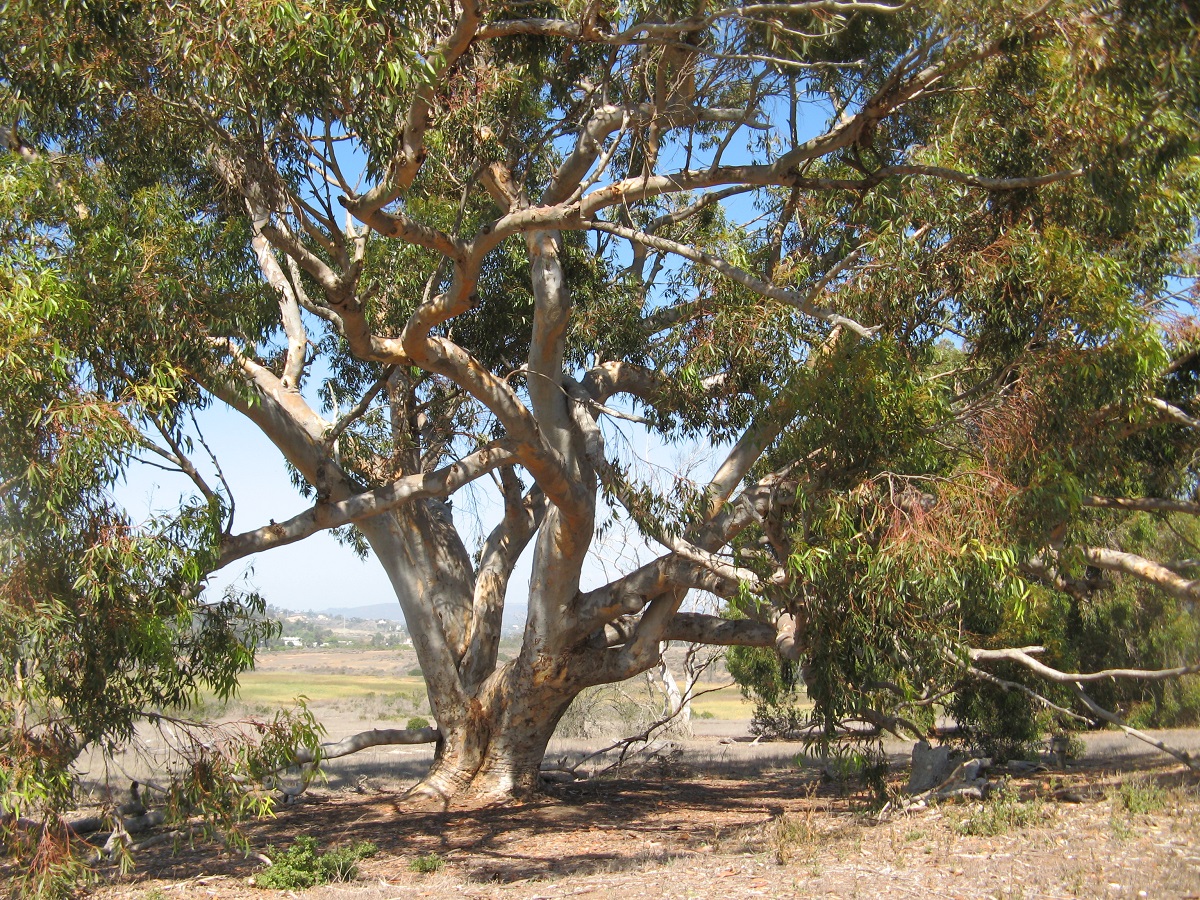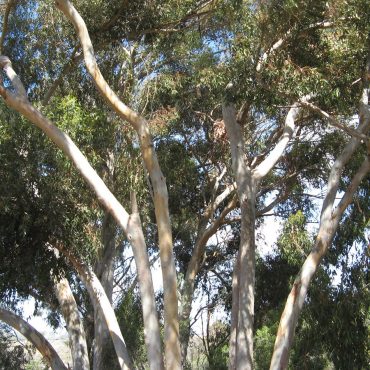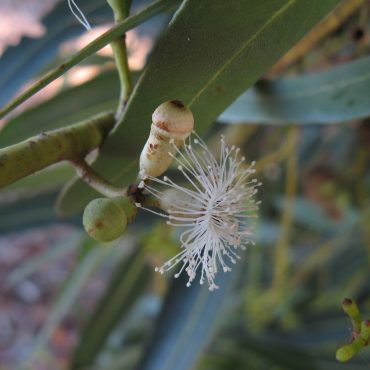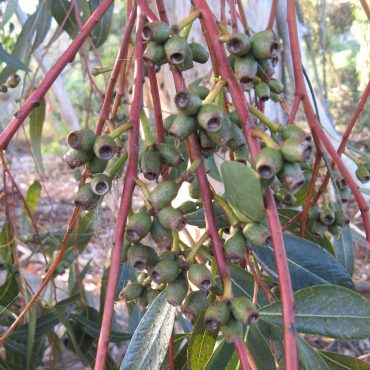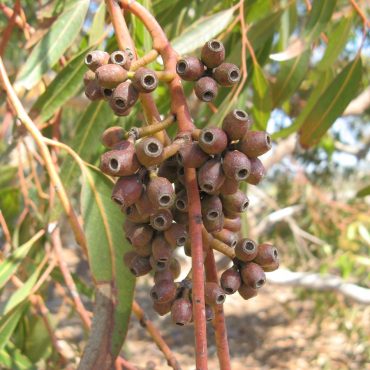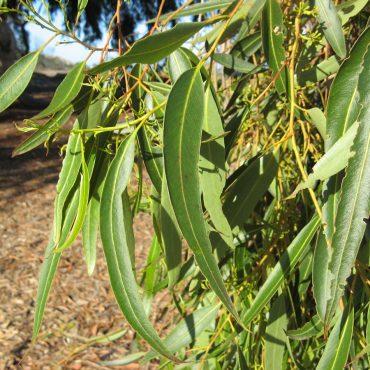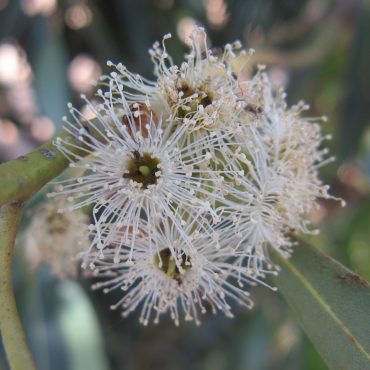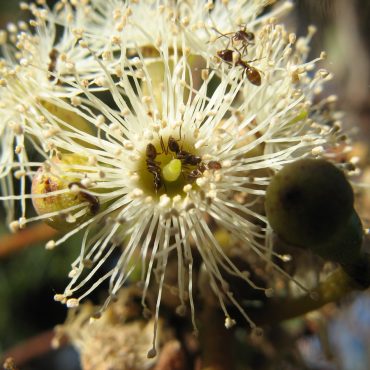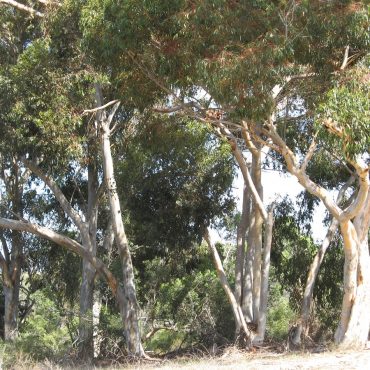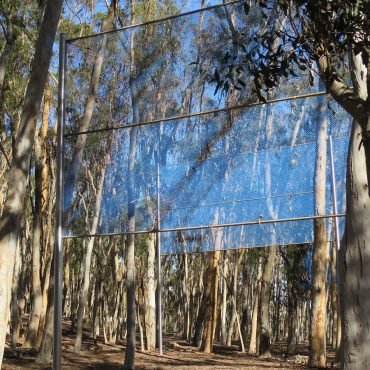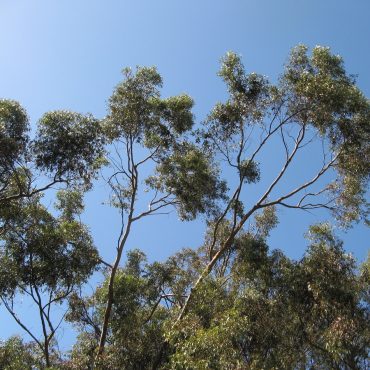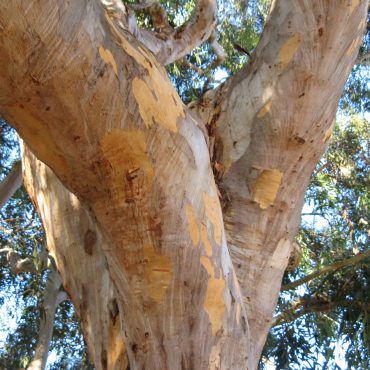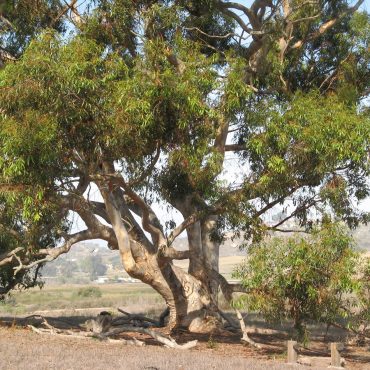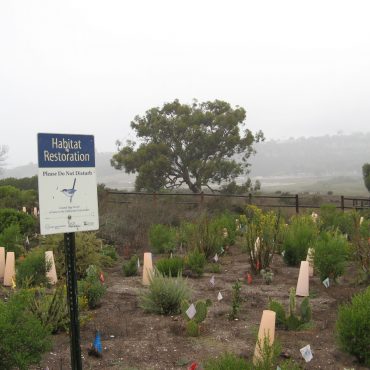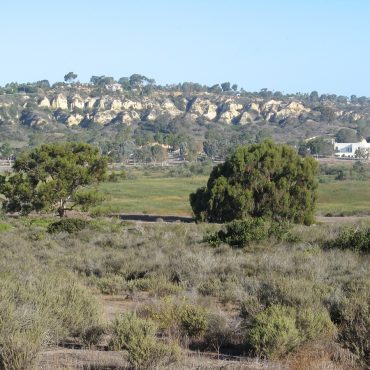Sugar gums are medium-large evergreen trees to 65 feet (20 m) in height, although taller trees are reported from cultivation.24,199 Trunks tend to be straight; however, the two old trees near the Santa Carina trailhead are bent and twisted, perhaps due to their exposed location. Sugar gum bark sheds in patches and strips leaving a smooth trunk pale, mottled in grays, oranges, and tans. Leathery leaves are ovate to lanceolate, often sickle-shaped, 3-6 inches (8-15 cm) long with smooth margins; they are medium green, with a waxy sheen and are somewhat paler on the underside. Numerous tiny glands are embedded in each leaf; these produce the volatile oil that gives eucalyptus its aroma.
Sugar gum flowers occur in small groups on stout peduncles from the leafless portions of branches. In this respect, sugar gum is unlike most eucalyptus species, which produce their flowers from leaf axils.196 The structures of eucalyptus flowers and fruit are unique; Johnston gives an excellent photographic description of one species.197 The base of the flower is a vase-like structure, the hypanthium, which encloses the developing pistil and stamens. In sugar gum, the hypanthium is shaped like a barrel. Traditional petals and sepals are absent. Instead, the petals have united into a bud cap or inner operculum, that covers the end of the hypanthium, protecting the immature pistil and stamens. In sugar gum, the bud cap is hemispherical. Also, sepals are joined to form an outer operculum, which is shed early in development. Just prior to flowering, the stamens expand and lift off the bud cap. The “flower” of a eucalypt is a spray of numerous stamens, within which is a stout, green pistil. The main flowering time of sugar gum is April through July;7 the September flowers in 2015 may have resulted from the unusual rains that summer.
The fruit of a eucalyptus often called a gumnut, is a compound structure of hypanthium and ovary which becomes woody when mature. In sugar gum, the fruit is barrel-shaped, 1-1.5 cm long. Tiny seeds are released through slits in the top of the ovary. In sugar gum, the ovary is recessed well below the edge of the hypanthium. The seeds are wind-dispersed.

